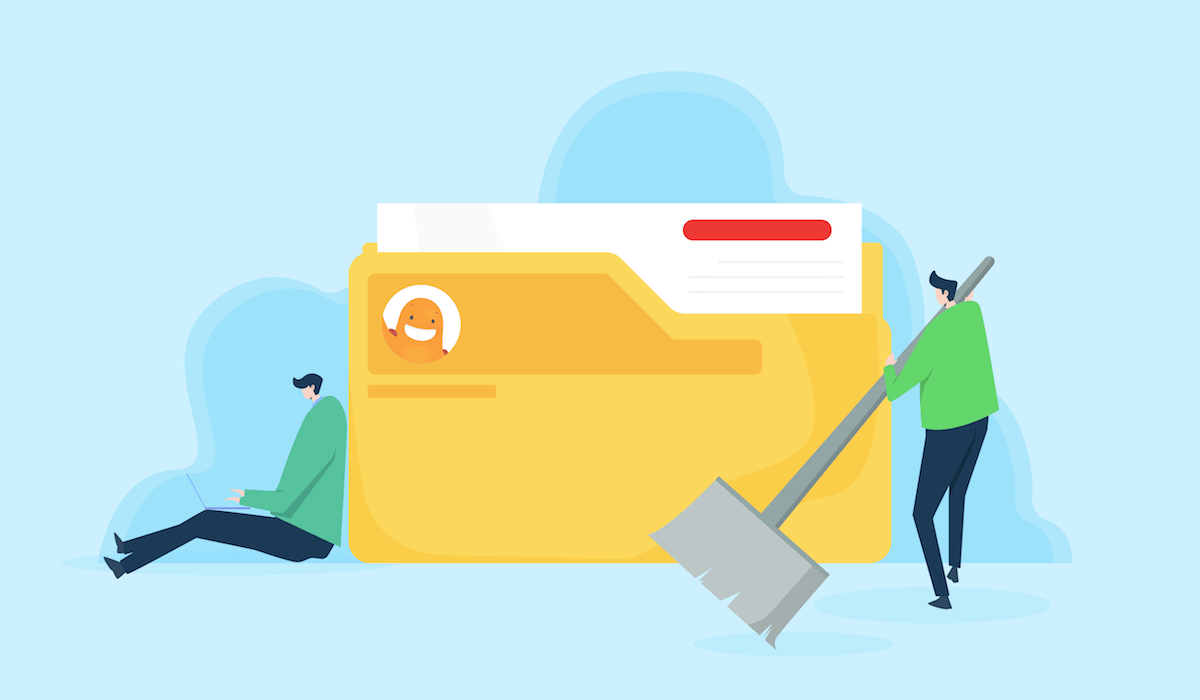Ready to clean up your act? Then start with your data! Today, almost 95% of businesses suspect their customer and prospect data are inaccurate. And, it’s costing U.S. businesses more than $600 billion each year. So, it’s no wonder that companies are taking notice of the importance of data cleaning. Let’s look at how data cleaning works and its benefits.
Create your perfect survey, form, or poll now!
What is Data Cleaning?
Data cleaning (or data scrubbing) is the process of identifying and removing corrupt, inaccurate, or irrelevant information from raw data. Correcting or removing “dirty data” improves the reliability and value of response data for better decision-making. There are two types of data cleaning methods.
- Manual cleaning of data, done by hand, is quite time-consuming. It’s best performed on small data sets.
- Computer-based data cleaning (automated data cleaning) is quicker and ideal for large data sets. It uses machine learning to carry out the data cleaning objectives.
Why is Data Cleaning Important in Survey Research?
While data cleaning may be expensive and time-consuming, using raw data can lead to many problems. Here are the top seven benefits of data cleaning.
1. Increasing Revenue
Many surveys are conducted to develop new marketing tactics. When a company has accurate data from its target audience, it can proceed with more confidence. This allows them to get better results and greater ROI on marketing and communications campaigns.
Clean data can also be segmented to focus on high-value prospects. These are the customers who are most likely to drive sales that companies want to focus on. Data scrubbing also helps businesses identify opportunities, such as a new product or service.
2. Improving Decision Making
Mistakes are bound to happen without clean data. The mistake could be huge, such as botching a new product release. Or, it could simply be embarrassing, such as being called out for bad data. Data cleaning is designed to reduce or eliminate inaccurate information that may mislead company decision-makers. Clean data provides more accurate analytics that can be used to make informed business decisions. This, in turn, contributes to the long-term success of the business.
3. Improving Productivity
A company’s contact database is one of its most valuable assets! However, have you ever stopped to think about how up-to-date it is? If it’s not current, your sales team may waste many hours per week contacting expired contacts or uninterested individuals.
Studies show that prospect and customer databases tend to double every 12-18 months. So, they can quickly become cluttered with inaccurate data. With accurate and updated information, employees will spend less time contacting expired contacts. This gives them more time to reach out to those who are truly interested in your products/services.
4. Boosting Your Reputation
It’s important to build and maintain a reputation with the public. This is especially important if you’re a company that regularly shares data with them. If you consistently provide clean data, they’ll come to trust you as a resource. However, just a few instances of inaccurate reporting can have them looking for a more reliable source.
One more consideration: With an inaccurate list, you’re bound to solicit people who aren’t interested in your company. As a result, they’ll perceive your calls and/or emails as spam, hurting the company’s integrity.
5. Maintaining Compliance
When it comes to people’s personal information, security is more important than ever. This is especially true with the introduction of GDPR compliance. By regularly cleansing your databases, you can keep an eye on customer contact permissions to be sure only opt-ins are solicited. This can help avoid the fines associated with breaching GDPR and other legislation.
6. Saving Money
Do you employ physical marketing strategies, such as direct mail coupons, newsletters, or magazines? Mailouts based on raw data can result in you reaching people that aren’t interested. You could also reach people who have moved or who have passed on. That’s a big waste of money and marketing materials!
7. Reducing Waste
Clean data reduces the amount of printing and distribution required for mailings because you’re only targeting legitimate, interested customers. Not only is this good for the business, but it’s also good for the environment! Heal the Planet reveals that junk mail adds 1 billion pounds of waste to landfills each year.
How to Perform Data Cleaning (7 Things To Look For)
The data cleaning process is all about spotting suspicious data and irregularities. Here’s a look at some of the most common things to look out for when cleaning up data on surveys.
1. Unanswered Questions
Respondents who only answer a portion of your questions can lead to survey bias by skewing the results. It could mean they weren’t qualified to take the survey so they left some questions blank. It could also indicate that they weren’t engaged in the survey and opted out early. It’s important to note that if a lot of respondents failed to complete the survey, it may have been due to bad survey design. That could mean poorly worded or irrelevant questions, broken survey logic, etc.
2. Unmet Target Criteria
Unqualified individuals can still sneak into a survey. Of course, if you’re surveying young women, for example, you don’t want the opinion of a middle-aged man influencing your findings! To remedy this, be sure to always ask screening questions and appropriate demographic questions to weed out undesirable respondents.
3. Speeders
These are people who speed through your survey, taking little time to read the questions (if they bother at all). This happens on required surveys people aren’t interested in, or they may rush through it to get a survey incentive. You can identify speedy survey takers by averaging out the response time for all participants and eliminating those that completed it in far less time.
4. Straightliners
Straightling is when participants choose the same answer over and over again. They may always choose “strongly agree,” for example (this is also a form of speeding). Of course, it’s possible that a participant does strongly agree with every statement. So, you can identify a straightliner by rephrasing a couple of questions with similar responses in different positions. You might also avoid matrix surveys, which easily allows someone to go down a column and click the same response. SurveyLegend’s matrix-type questions are viewed on individual scrolls, making someone much less likely to straightline responses.
5. Inconsistent Responders
Many surveys will ask what appear to be redundant questions, but this is done to catch speeders and straightliners due to inconsistency in their responses. For example, you may ask someone how often they watch the news, and then filter by those who said “a few times per week.” On another question, you could ask what their favorite news program is, and then filter responses by “I don’t watch the news.” If a respondent has contradictory answers like this, it’s clear they were either being dishonest or careless. Either way, you’ll likely want to remove them from your analysis.
5. Unrealistic Responders
Some surveys will include unrealistic responses to try to catch speeders and straightliners. For example, when asking how many hours per week someone uses the internet, they may include 170 hours as an option. Of course, there are only 168 hours in a week, making this impossible!
6. Outliers
Back to the example above. If someone says they use the internet 150 hours per week (which is possible, however unlikely), they are what’s known as an outlier. This does not reflect the internet usage of the general population, so it should be removed from the survey as not to skew results.
7. Nonsensical Responders
Does your survey have open-ended questions? If someone fills in the blank with gibberish, say a random word or just a series of keystrokes, they’re obviously not engaged or are speeding. The results should be removed from your survey analysis.
Additional Data Cleaning Tips
Here are a few more tips to consider when it comes to data cleaning.
Remove Irrelevant Values
You want your data analysis to be as simple as possible, so remove irrelevant data. For example, do you want to know the average education level of your employees? Then remove the email field if you won’t be following up.
Remove Duplicate Values
Duplicates can skew your data and waste your time. They could exist because you combined data from multiple resources, or perhaps the survey-taker hit “submit” twice and it went through. Either way, remove them for accuracy.
Fix Typos
People make mistakes, and typos are very common. However, this can create havoc for some algorithms. So, if it’s clear what a respondent meant, you can fix the typo to make sure the response is counted.
Consider String Size
This is another form of a typo. A respondent (usually accidentally) doesn’t complete a string of digits. For example, they type 3360 for their zip code, perhaps because they simply didn’t hit the last key hard enough to register. If you have a good idea of your respondent’s location, you can fill in the string, or remove the response from the analysis.
Convert Data Types
Stored numbers as numerical data types for consistency. Stored a date as a date object, a timestamp as a number of seconds, and so on. Categorical values can also be converted into and from numbers for easier and more accurate analysis.
Conclusion
Data cleaning is a must for accurate and useful survey results. While it can be a time-consuming process, it has many benefits. SurveyLegend lets you quickly and easily create professional online surveys. You can also delete individual responses when data cleaning. Whether the response isn’t complete, doesn’t offer insight, or seems “suspicious,” our survey platform makes data cleaning less of a chore. You can also easily find and track the answers of each individual respondent. Just export your survey data in Google Drive or in Excel for further analysis and cleansing.
Do you practice good data hygiene? Any unique data cleaning methods you use that we’ve missed? Sound off in the comments!
Create your perfect survey, form, or poll now!
Frequently Asked Questions (FAQs)
Data cleaning involves identifying and removing corrupt, inaccurate, or irrelevant information from raw data to improve the accuracy and value of response data.
Data cleaning helps companies make better marketing decisions. It also helps researchers present more accurate data when reporting on issues impacting the public.
Signs that your raw data may be inaccurate, or “dirty,” include unanswered questions, unmet criteria, and inconsistent or unrealistic answers. Types of respondents to watch out for are speeders (those that rush through the survey), straightliners (those who always choose the same answer), and outliers (those whose responses are very different from the mean).
Data cleaning methods include removing irrelevant data and duplicate values, fixing typos, checking string sizes (in regards to numbers), and converting data types.




